|
|
| Participants |
| From L to M |
|
|
LAZARIDIS Christos |
CERN, Geneva -
Switzerland |
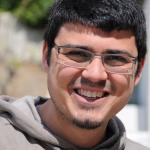 |
|
Although a computer geek since ever, I studied physics in the Aristotle
University of Thessaloniki. Afterwards, I did my PhD studies at the
University of Wisconsin-Madison. During that time I was based at CERN
working on the hardware commissioning and the operational software of
the CMS Level-1 trigger while preparing my physics analysis in ROOT and
C++. Currently, I am a CERN fellow working on the LAGUNA-LBNO design
study. Throughout these years I also gained valuable experience in
Python, Linux system administration and shell scripting. I am a tinkerer
by nature, enjoying breaking things apart and putting everything back in
place (successfully most of the times!). |
|
| |
|
LETTENBICHLER Jakob |
HEPHY, Vienna -
Austria |
 |
|
I am working on a track finding module specialized for low momentum
tracks in the Silicon Vertex Detector (a double-sided strip detector) of
the Belle II experiment (Tsukuba, Japan). Transverse momenta (pT) down
to 50 MeV/c (high deviations due to material effects) shall be
reconstructed and only a small number of layers are available (3-4
layers depending on pT), while facing considerable background, mainly
Bhabha-Scattering and Touschek effect. We plan to deal with it by
combining 3 different techniques: a Cellular Automaton produces track
candidates (TCs) which are filtered by a Kalman filter which calculates
quality indicators for each TC. These quality indicators are used by a
neuronal network of Hopfield type to determine a reasonable set of TCs
which do not share hits. I am currently working using linux (ubuntu) and
am familiar with Microsoft Windows too. C++ and Python are the languages
I use most. Basic knowledge for C and Octave (Matlab) does exist too. |
|
| |
|
LJUNGGREN Martin |
Lund University -
Sweden |
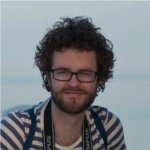 |
|
I finished my master's degree analysing test beam from a prototype time
projection chamber (TPC) constructed by the LCTPC collaboration for R&D
towards a detector for the ILC. I have since started a PhD in the Alice
collaboration and am currently involved in studies for an upgrade of the
Alice TPC, where I am analysing test beam data from a prototype
(GEM-based) readout system. I am also working on simulations of the
upgraded TPC. Here I use mainly ROOT and possibly Geant in the near
future. Another part of my Phd-work is the analysis of anisotropic flow
of protons, pions and kaons in Pb-Pb collisions using data from the
Alice-experiment. Here I use mainly ROOT (and AliROOT). Other than C++,
I am somewhat familiar with Fortran and Matlab. In operating systems, I
am familiar with Linux and Windows. |
|
| |
|
LOBATO Lorena |
CERN, Geneva -
Switzerland |
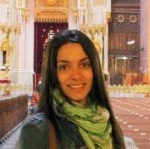 |
|
I studied a BTEC in Telecommunication Systems, and after that, I
obtained a Master's Degree in Computer Science at the University of
Vigo. Afterwards, I worked for different companies as a System Analyst,
Programmer, Database Manager and IT Consultant. In 2011, I joined CERN
as a Technical Student in the PH-ESE group, to work on software
development for a GLIB project. When I finished, I joined the IT-DB
group as an Openlab Fellow, sponsored by Oracle, to work on Oracle
replication technologies. |
|
| |
|
LÓPEZ GONZÁLEZ Juan |
CERN, Geneva -
Switzerland |
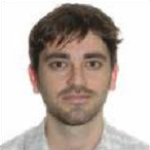 |
|
I work for GS-AIS-GDI in development and maintenance of the applications
of the group (Phonebook, public outreach, e-groups, roles, foundation
data...) I am also responsible of the maintenance and administration of
the deployment/build/monitoring infrastructure in GDI section.
Programming languages: C++, C#, Java, Groovy (Grails) and Lisp. Others:
Maven, Bamboo, Nexus, Atlassian tools. |
|
| |
|
MALTA RODRIGUES Alan |
Universidade do Estado
do Rio de Janeiro - Brazil |
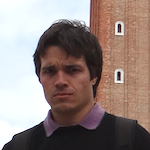 |
|
I am a digital system engineer currently working at CERN in the CMS
experiment, being part of the Cat-A program for Rio de Janeiro State
University. My main responsibility for the last 2 years was in the time
critical production of Release Validation (RelVal) samples that are used
for the CMSSW software validation, with the use of the Grid Computing
infrastructure. In addition to that, I have been working together the
Workflow Team monitoring and solving issues arisen during the MC
production and Data reprocessing. Finally, I just started the migration
process from the RelVal to the CMSWEB operations, where the latter
provides central and critical services to the CMS community. |
|
| |
|
MANCINELLI Valentina |
CERN, Geneva -
Switzerland |
 |
|
I studied computer science at the University of Perugia, in 2011 I
obtained the master degree with a thesis on the development of a
monitoring system for grid services based on NoSQL database. The same
year I started working at CERN. At the moment I am participating on the
Common Analysis Framework project which aims is to build a common system
for the Distributed Analysis for ATLAS and CMS experiments. The CAF core
system is based on PanDA(Production ANd Distributed Analysis system, a
Pilot-based workflow manager of ATLAS) . I worked first in the
development of the prototype of the TaskManager layer for CMS that
manage user requests breaking them in PanDA units (job). Currently I am
responsible for the modularization of the PanDA pilot code taking care
to implement the CMS specific modules. |
|
| |
|
MANZALI Matteo |
INFN, Bologna - Italy |
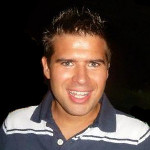 |
|
I am an Italian PhD student at the University of Ferrara and I had the
master degree on Computing Science at the University of Ferrara (2011).
My master dissertation focused on the development of a DAQ software for
the prototype of a muon detector and the central goal of my PhD is the
study of new parallel programming solutions and tools in many-core era.
I am also working for the INFN-CNAF institute as researcher in the R&D
group. Here I am working on the parallelization of existing algorithms
in physics applications for online and offline analysis (using Intel
tools) and the use of new coprocessors. Before that, I have worked on
the design and implementation of a private IaaS infrastructure to
provide VMs on demand (using OpenStack). |
|
| |
|
MANZI Andrea |
CERN, Geneva -
Switzerland |
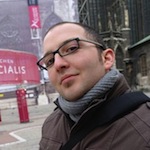 |
|
I am a computer scientist graduated from the University of Pisa in
Italy. After working 3 years as a research fellow at CNR (the Italian
National Research Council) and 1 year in a private company (IONTrading)
as software developer, I have started working at CERN in 2009 and I am
currently holding a staff position in the IT Department. I am involved
in the EU project iMarine, having the roles of deputy technical
director, WP leader and developer of solutions for data transfer. In
parallel I am involved in the DPM project (grid storage), where I am the
developer of an extension of the storage solution to Apache HDFS. My
main programming languages are Java, C++ and C. |
|
| |
|
McCREA Alison |
University of California, San Diego -
U.S.A |
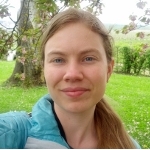 |
|
Currently I work for CERN Computing Operations, maintaining and
improving the CERN-based portion of a pilot-based workload management
system called glideinWMS (based on HTCondor), which processes Monte
Carlo and user analysis jobs for CMS on the Grid. With the help of many
others, I am currently expanding this infrastructure to allow usage of
cloud clusters (such as the CMS HLT farm during LS1), as well as
multicore and opportunistic resources, with the aim of preparing for the
increased computational demand expected during the LHC's 2015 run. I
have a B.S. in Physics from the University of California, San Diego,
with a minor in Computer Science, which I received in 2011. My language
of choice is Python, and I am also versed in xml, bash scripting, Java,
C, C++, and various assembly languages. |
|
| |
|
MESSI Francesco |
Rheinische Friedrich-Wilhelms-Universität, Bonn -
Germany |
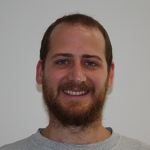 |
|
I graduated in Physics working on the time-adjustment of the Front-End
electronics for the muon chambers of the LHCb experiment in the
electronics group of the university of Rome "La Sapienza". I worked one
year in the didactic group of the university of Rome "Tor Vergata"
developing didactical instrumentation for the high school. I started my
PhD in 2009 at the "Rheinische Friedrich-Wilhelms-Universität" in Bonn
on the Tagger Detector of the BGO-OD experiment at the ELSA accelerator.
The main focus of my work is the development of the Front-End
electronics (Amplifier, Dual Threshold Discriminator and Shaper). This
includes the design of the PCB, the development of the firmware for the
microcontroller and of the User Interface of the board, the
commissioning of the boards and the analysis for the in-beam
characterization of the prototype detector. I also contributed to the
construction of the detector and to the implementation of the analysis
tools. At present I am writing my thesis. |
|
| |
|
MONTUENGA Pedro |
University of Illinois at Urbana-Champaign – U.S.A. |
 |
|
I did my undergraduate studies in Physics at Simon Bolivar University in
Caracas, including a year at Lund University. I am currently pursuing a
PhD at the University of Illinois. For about 1 1/2 years I have been
involved in the COMPASS experiment at CERN, working on the design of new
Drift Chambers 5 and 6. For the last six months I have also been
involved in the PHENIX experiment at Brookhaven National Lab, NY;
working on the calibration for the Muon Piston Calorimeter for the
ongoing run13 and plan to do my dissertation work on the measurement of
\Delta g, i.e., the contribution of gluons to the total spin of the
proton. I work both in Linux and Windows. I program almost entirely on
C++ (plus ROOT) for data analysis. I have used Java in the past and have
some command of MATLAB and Labview. |
|
| |
|
MORENO PASCUAL
Fernando |
CERN, Geneva -
Switzerland |
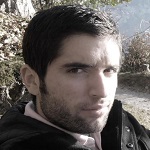 |
|
One of my main objectives here at CERN is to carry out the design,
implementation and the deployment of a new Voice over IP telephony and
Unified Communications service providing an enhanced telephony user
experience for the whole organization. Moreover, I work on the
administration of the Mail Service at CERN and I am an active member of
the third level support on this service. The operating system mainly
used on our section is Windows (XP/7/8/Server 2003/Server 2008), but I
also feel comfortable working with Linux although I have less skills in
this last one. About the programming languages that I am familiar with,
I can say that C#, C++, C, Java, SQL, Powershell. |
|
| |
|
MORGENSTERN Marcus |
Technische Universitaet Dresden - Germany |
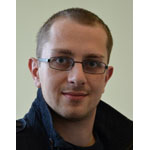 |
|
Currently I am PhD student studying heavy neutral particle decays at the
ATLAS experiment. This involves analysing huge amounts of data. Hence,
parallel computing is essential in the daily workflow. Furthermore, I
develop tools used by several analysts and have been contributing to the
ATLAS trigger and reconstruction software in the past. In general I use
Scientific Linux/Mac OSX as main operating systems, but knowledge on
Windows systems exists. I am very familiar with advanced C/C++ (98/11 –
including external libraries like boost, tbb) and python. Basic
knowledge in C#, Java, Scala, shell, SQL, Ruby, and R exists. |
|
| |
|
MORVAJ Ljiljana |
Nagoya University - Japan |
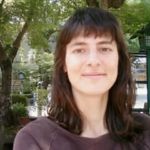 |
|
I studied at the University of Zagreb, Croatia, where I obtained a
masters’ degree in theoretical physics. In 2009 I attended CERN summer
school, where I got interested in high-energy experimental physics. In
2010 I enrolled in a PhD program at Nagoya University, Japan. Currently
I am working on the data analysis in ATLAS, searching for physics beyond
the standard model. My PhD thesis is titled "Searches for the Universal
Extra Dimensions with the ATLAS Detector". The signature is
characterized by low momentum leptons produced in the decays of the new
extra-dimensional particles. For my analysis I am using Linux operating
system, C++, Root and sometimes Python. I am also familiar with using
the Grid for processing the data. |
|
| |
|
MUSHEGHYAN Haykuhi |
Universität Göttingen - Germany |
 |
|
Originally I am Armenian and I have got my Master's degree in "Computer
Systems and Informatics" department of State Engineering University of
Armenia in 2008. Since 01.10.2012 I am a PhD student on "Grid computing"
in II. Physikalisches Institut (Universität Göttingen). Currently I am
working on two projects: ATLAS qualification task and HappyFace project.
My qualification task is to extract some metrics from the logged data
and make them available to the development team of AMI (ATLAS Metadata
Interface). AMI is an official ATLAS tool for dataset selection since
July 2006. This project uses JAVA as a programming language. The
HappyFace project is a meta-monitoring tool to monitor the grid sites on
different levels. This project uses Python as a programming language.
Both projects use Scientific Linux as an operation system. |
|
|
|
| |
|
|
